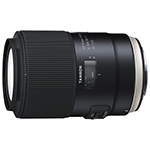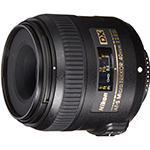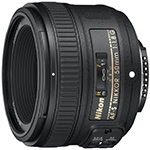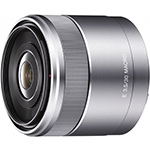What is the best lens for food photography? What’s the best phone camera lens for food photography? What’s the best lens size for food photography?
Are you looking for the best lens for food photography?But you can’t decide which one to choose.In this article,I will help you get the best lens for food photography.
There are plenty of smartphone camera lenses in the market today, but only a handful do the job for food photography. In this article, I find out which camera lens is best to capture stunning images of your food.
If you’re a food blogger, photographer or cook then you probably know that having a high quality lens makes a big difference between an okay shot and a mouth-watering photo. But what’s the best lens for food photography? That depends on what you plan to photograph, your budget, and whether there are other features which are important to you.
Why Best lens for food photography Sony ?
Food photography is all about the light. A mobile phone’s lens does not normally do well to highlight the perfection of a meal shot. There is great food photography outside and inside a phone’s lens capability. That being said, it helps to understand what lens will help you get the job done.
Best lenses for food photography nikon
This is the best lens for food photography in my opinion. Now I’ve used both Nikon and Sony cameras to take food pictures, but I prefer the Sony’s because they allow me to capture more detail with a shallow depth of field while still allowing me to shoot quickly since they focus faster than the Nikon dslrs
If you want to get creative with your photography, food photography is a great way to do it. There is something about serving up your meal in front of the camera that makes food look more appetizing.
Food photography is a passion of mine. I start with an empty fridge, and end up taking food photos in every corner of my apartment: the bedroom, the living room, the bathroom…
You’ve got some berries and berries on your table, a wonderful gift from Uncle Jimmy. Now you’re ready for some pictures but you don’t know what lens to choose. What do you need? How should you capture them? Which lens among the many will work best for you?
Best lens for food photography Sony

Choosing the best lens for food photography will help you create drool-worthy Instagram shots of delicious dishes.
Our series of camera designs includes the best lens for food photography Sony as one of the largest manufacturers. As a website focused on giving you the best cameras, solaroid aims to provide the most stylish and extravagant cameras for you. Our experts analyze the globe to find the most beautiful and unique cameras and feature them on solaroid. There are many unique cameras in our collection, including best lens for food photography sony, best lens for food photography fuji, and Sony 90d food photography.
We have the best lens for food photography sony a6000 anywhere in the world, with great designs, values, and styles. The designs of cameras vary widely. The solaroid official website is the best place to shop for the wide angle lens for food photography. Our cameras are among the most popular on the market. You can find the best lens for food videography on our site. Choose from a variety of camera designs available now for best lens for food photography sony a6400. Choose now!
A good camera, adequate lighting, and artistic styling are essential for great food photography, but having the right focal length and lens type is also an important consideration.
Typically, a 50mm lens on a full-frame camera (or 35mm if you use a crop sensor body) is a good place to start – anything wider than this can distort the food at close distances.
Tilt-shift and macro lenses are also popular, and certain zoom lenses can help when framing, so you don’t need to keep moving your tripod for multiple perspectives.
(We don’t discuss using a tilt-shift lens in this guide, since high prices and lack of versatility make them unsuitable for many food photographers.)
A wide aperture lens is also advisable for food photography, helping blur the background to achieve that dreamy look. It’ll also help if you’re shooting in a restaurant with low light.
In this guide, we’ve uncovered the best bang for your buck lenses for food photography to cover all budgets.
So get your fork out – it’s time to dive in!
Best Lenses for Food Photography in 2022
| IMAGE | PRODUCT | FEATURES | |
|---|---|---|---|
 | Canon 35mm f/2.8BEST CANON APS-C | Compact, Lightweight DesignBuilt-in Macro LiteSmooth Movie Servo AFGMo Aspheric Lens | VIEW PRICE → |
 | Tamron 90mm f/2.8BEST CANON FULL FRAME | Outstanding Depictive CapabilitiesAttractive BokehAffordableMoisture & Dustproof | VIEW PRICE → |
 | Nikon 40mm f/2.8BEST NIKON APS-C | Impeccably SharpBeautiful BokehCompact, Lightweight DesignFast Aperture | VIEW PRICE → |
 | Nikon 50mm f/1.8GBEST NIKON FULL FRAME | Fast AutofocusLightweight & CompactBudget-friendlySilent Wave Motor | VIEW PRICE → |
 | Fujifilm 60mm f/2.4BEST FUJIFILM | RobustSharp MacroUltra-compact & LightweightFast Aperture | VIEW PRICE → |
 | Sony 30mm f/3.5BEST SONY APS-C | AffordableLightweightPerfect for BeginnersSimple Design | VIEW PRICE → |
 | Sony 90mm f/2.8BEST SONY FULL FRAME | Built-in Image StabilizationExceptionally Smooth BokehUp to 1:1 MagnificationFast Max Aperture | VIEW PRICE → |
 | Panasonic 30mm f/2.8BEST MICRO FOUR THIRDS | Super-compactLightweightFast AutofocusImage Stabilized Lens | VIEW PRICE → |
Canon Lenses
1. Canon EF-S 35mm f/2.8 Macro IS STM
See More Reviews EDITOR’S CHOICEPros
- 1:1 closeup macro lens
- Lightweight, compact and portable
- Fast aperture and 5,12″ (13cm) minimum focusing distance
- Image stabilized
- Budget-friendly yet excellent outcomes
Cons
- Not weather sealed
CHECK CURRENT PRICE
The Canon EF-S 35mm f/2.8 Macro IS STM is a brilliant lens that delivers optical sharpness and stunning results for food photography.https://imasdk.googleapis.com/js/core/bridge3.501.0_en.html#goog_81628309700:00 of 37:32Volume 0%
Designed for Canon EF-S range of APS-C DSLR camera bodies (cropped sensor), the 35mm f/2.8 lens features a true 1:1 macro ratio capturing exceptional detail at a minimum distance to focus of just 5.12″ (13cm).
The f/2.8 maximum aperture allows for beautiful subject separation and background bokeh to help make your food photography pop.
In combination with image stabilization, this fast aperture also allows the lens to perform well in low-light shooting conditions. As a result, you can confidently capture mouth-watering food photos even in the darkest laneway bar.
What’s most impressive about the Canon EF-S 35mm f/2.8 Macro IS STM is its pocketable size. It weighs just 6.7oz (190g) and is a tiny 2.2″ x 2.7″ (56mm x 68mm), making it one of the most compact 1:1 macros on offer.
2. Tamron SP 90mm f/2.8 Di Macro VC USD
See More ReviewsPros
- True 1:1 macro function
- VC image stabilization for low light performance
- Moistureproof and dustproof
- Excellent edge-to-edge image sharpness
- 11″ (28cm) minimum focusing distance
Cons
- Older generation lens
CHECK KCURRENT PRICE
The Tamron SP 90mm f/2.8 Di Macro VC USD is a 1:1 macro lens built for Canon EF-mount DSLRs.
As a robust prime lens for your full-frame camera, it features extensive dust and moisture sealing for use in any condition.
The Tamron SP 90mm f/2.8 captures amazing food shots thanks to its edge-to-edge image sharpness and f/2.8 fast max aperture.
A 90mm focal range and 11″ (28cm) minimal focal distance results in compressed compositions where the plate of food is highlighted without unnecessary background distraction.
Aside from the fast aperture, low light performance is assured thanks to Tamron’s VC image stabilization. This means you can shoot at slower shutter speeds without camera shake.
The Tamron weighs in at 1.34lb (610gm) and measures just 4.61 x 2.87 (11.7cm x 7.3cm), making it a perfect pairing with a Canon full-frame sensor camera.
3. Canon RF 35mm f/1.8 Macro IS STM
See More ReviewsPros
- Lightweight, compact and portable
- Faster aperture for ultra-fine depth of field
- Image stabilisation for low light performance
- Budget-friendly RF lens
- 6.7″ (17cm) minimum focusing distance
Cons
- Not weather or dust sealed
- 2:1 macro ratio only provides 50% magnification
CHECK CURRENT PRICE
The lens range for Canon’s full-frame sensor mirrorless cameras continues to grow and includes the Canon RF 35mm f/1.8 Macro IS STM lens. Finally, a 35mm food photography lens for the Canon R series.https://5b7d957ac82cfd9142a61f022894ccde.safeframe.googlesyndication.com/safeframe/1-0-38/html/container.html
It’s tiny at 2.9 x 2.5 inches (7.3cm x 6.35cm) and weighs only 10.4oz ( 290gm). What makes this pocketable macro lens a winner is its fast f/1.8 aperture and image stabilization.
Not only is low-light performance assured, but you’ll also achieve exceptional food photography shots with a shallow depth of field – if you get close enough, you can even mimic the look of a tilt-shift lens.
With a 6.7″ (17cm) minimum distance to focus, every scene will be captured in stark detail.
The flip side is that the Canon RF 35mm f/1.8 Macro IS STM lens delivers only 50% magnification due to its 2:1 macro ratio.
Regardless, those looking for the best lens for food photography that’s also budget-friendly need to look no further than this Canon RF mount macro.
4. Canon EF 24-70mm f/4L IS USM
See More ReviewsPros
- Versatile full-frame zoom
- Image stabilization for low light
- Weather sealed
- High 0.7x magnification ratio
- 14.9″ (38cm) minimum focusing distance
Cons
- Constant f/4 less ideal in low light
CHECK CURRENT PRICE
Primes often make the best lenses for food photography as they deliver stronger optical performance than cheaper zoom lenses – especially some kit lenses.
Food photographers shooting with a Canon full-frame DSLR should pick up the Canon EF 24-70mm f/4L IS USM lens. While it’s not a macro lens, the weather-sealed L series zoom has a minimum shooting distance of 14.9″ (38cm).
A 24-70mm zoom lens range is effective in any photography genr, providing greater control and versatility for compositions and framing.
The f/4 constant max aperture is suitable for the 70mm end. At the wider 24mm end, it’s not ideal for low light conditions – though it excels in natural light.
However, the Canon EF 24-70mm f/4L IS USM features Canon’s proven image stabilization to optimize low-light performance.
Not many people consider using a wide-angle lens for food photography, but shooting at 24mm helps include more of the scene, especially if you compose with the subject in the dead centre to avoid distortion.
Built for Canon’s DSLR camera range, the 24-70mm is 3.66″ x 3.27″ (93mm x 83mm) and balanced at 1.32lb (598gm). If you can only afford one lens, it’s a great lens to choose.
Nikon Lenses
5. Nikon AF-S DX 40mm f/2.8G Micro
See More ReviewsPros
- High-precision 1:1 macro lens
- Ultra-lightweight and compact
- Fast aperture for superb depth of field
- Budget macro ideal for DX mount Nikon
- 6.3″ (16cm) minimum focusing distance
Cons
- No image stabilisation for low light
CHECK CURRENT PRICE
The most captivating close-up food photography captures mouth-watering details of the texture, contrast, and placement of ingredients. The best way to achieve this effect is with a macro lens.https://5b7d957ac82cfd9142a61f022894ccde.safeframe.googlesyndication.com/safeframe/1-0-38/html/container.html
Nikon APS-C (cropped sensor) photographers are fortunate to have the Nikon AF-S DX 40mm f/2.8G Micro delivering a true 1:1 magnification ratio and high image quality.
The budget-friendly 40mm f/2.8 lens captures ultra-close-up shots at a minimum distance of just 6.3″ (16cm).
The fast f/2.8 aperture compensates for the lack of image stabilization while delivering subject separation and unforgettable background bokeh.
Robust and compact, the Nikon AF-S DX 40mm f/2.8G Micro measures 2.56″ x 2.72″ (65mm x 69) and weighs in at a comfortable 8.3oz (235gm).
6. Tamron SP 90mm f/2.8 Di Macro VC USD
See More ReviewsPros
- True 1:1 macro magnification
- VC image stabilization for low light performance
- Moisture and dustproof
- Excellent edge-to-edge image sharpness
- 28cm minimum focusing distance
Cons
- Older generation lens
CHECK CURRENT PRICE
The same lens as the Canon EF-mount version, the Tamron SP 90mm f/2.8 Di Macro VC USD is a full-frame 1:1 lens built for Nikon’s F-mount DSLRs.
The Tamron SP 90mm f/2.8 for Nikon renders true-to-life color and high image quality in every food photography composition.
The fast f/2.8 maximum aperture and longer 90mm focal length allows tighter compression and exquisite subject separation. Get in super close for absolute detail clarity with the 11″ (28cm) minimal focus distance.
Another benefit of the Tamron SP 90mm f/2.8 Di Macro VC USD is the VC image stabilization system that pairs with the fast aperture to achieve optical clarity even in low-light situations.
The lens is built tough thanks to features such as a weather and dust-sealed body. It weighs 1.34lb (610gm) and has a relatively compact size of 4.61″ x 2.87″ (11.7cm x 7.3cm), pairing well with any of the best Nikon cameras.
7. Nikon 50mm f/1.8G
See More ReviewsPros
- Compact and lightweight nifty-fifty
- Fast autofocus system
- Fast aperture for low-light and depth of field
- Budget-friendly full-frame prime
- 17″ (45cm) minimum focus distance
Cons
- No image stabilisation feature
CHECK CURRENT PRICE
Every Nikon full-frame food photographer needs a nifty-fifty, fast aperture lens in their kit – 50mm is quite simply the best all-purpose prime.
Food photographers will love the Nikon 50mm f/1.8G for Nikon’s FX format.
It features a compact and super lightweight body at 2.09″ x 2.83″ (53mm x 72mm) and 6.5oz (184gm) in weight.
Aside from being an all-purpose and lightweight prime, it features fast autofocus, accurate manual focus, and ultra-wide max aperture at f/1.8. Get close enough, and you can make a photo look like it’s taken with a tilt-shift lens.
Such a fast aperture more than makes up for the lack of image stabilization while still delivering excellent background effects and subject separation.
As it’s not a macro lens, the minimum focus distance is 17″ (45cm) – however, the 50mm focal length is ideal for higher compositions and top-down shots.
Above all, what makes the Nikon 50mm f/1.8G so appealing is its optical performance and budget-friendly price tag.
8. Nikon Z 24-70mm f/4 S
See More ReviewsPros
- Versatile Z mount zoom
- Edge-to-edge optical sharpness
- Weather sealed construction
- Flexibility of different focal lengths
Cons
- Lens breathing while focusing
- No image stabilisation
- Slow aperture at wide angles
CHECK CURRENT PRICE
Nikon continues to add high-performance digital mirrorless cameras to its Z-mount range. The lens lineup is also expanding, with the Nikon Z 24-70mm f/4 S one of the best choices for food photography.
A versatile 24-70mm full-frame zoom lens makes the ideal addition to any food or portrait photographer’s kit. The wide end allows for broader scene-setting shots, while the 70mm end is ideal for higher compositions of plated meals.
The weather-sealed body weighs 1.1lb and measures 3.5″ x 3.1″ (88.9mm x 78.7mm) – so it balances Nikon mirrorless cameras perfectly.
While the 11″ (28cm) focal distance is great for food photography, the f/4 maximum aperture is not the best for low-light shooting – especially as the Nikon Z 24-70mm f/4 S doesn’t feature image stabilization for slower shutter speeds.
If you keep out of dark corners, however, this zoom lens will serve you well.
The autofocus system is incredibly fast; however, it’s worth pointing out that the 24-70mm f/4 suffers from lens breathing when obtaining sharp focus.
Fujifilm Lenses
9. Fujifilm XF 60mm f/2.4 R Macro
See More ReviewsPros
- Sharp macro for extreme close-ups
- Fast aperture for low-light performance
- Ultra-compact, lightweight yet robust
- 10.6″ (27cm) minimum focus distance
Cons
- 2:1 magnification ratio
- Not weather sealed
The Fujifilm XF 60mm f/2.4 R Macro lens is the best food photography lens for your cropped sensor X-Pro or X-T series of Fuji cameras.
The 60mm focal distance is a 90mm FF equivalent on a cropped sensor camera body and provides crystal clear and tack sharp images with excellent compression.
The Fujifilm 60mm has a fast f/2.4 aperture to deliver clean subject separation and gorgeous background bokeh.
While it’s not weather-sealed, it’s built like a tank, weighing 7.6oz (215.5gm) and measuring 2.8″ x 2.52″ (71mm x 64mm).
The Fuji 60mm delivers a 2:1 magnification ratio while allowing ultra-close-up shots at a minimum focus distance of 10.6″ (27cm).
As it’s an older lens, the focus is not as fast as the more recent Fujifilm macro lenses. Regardless, it captures mesmerizing food photography images every time.
Sony Lenses
10. Sony E 30mm f/3.5 Macro
See More ReviewsPros
- 1:1 macro E-mount lens
- Lightweight and pocketable body
- Budget and entry-level friendly lens
- 3.74″ (9.75cm) minimum focus distance
- Also a great portrait lens
Cons
- Slower aperture not great for low light
CHECK CURRENT PRICE
Sony full-frame cameras and quality lenses are the stars of the Sony camera lineup. But that doesn’t mean that Sony E-mount APS-C mirrorless camera body shooters need to miss out.
The Sony E 30mm f/3.5 is a fantastic and affordable 1:1 macro lens that’s perfect for food photography. Its simple design, features, and performance make it ideal for anyone new to the food photography genre.
To balance perfectly with Sony crop sensor cameras, this lens weighs 10.2oz (290gm) and measures a stocky 3.54″ x 4.72″(90mm x 120mm).
The Sony E 30mm f/3.5 1:1 lens features a reasonable f/3.5 maximum aperture. It’s not ideal for low light conditions, especially as the lens doesn’t feature image stabilization.
Regardless, with a super-close 3.74″ (9.5cm) minimum focus distance and Sony’s renowned optical quality, it’s a perfect food photography lens for APS-C cameras.
11. Sony FE 90mm f/2.8 Macro G OSS
See More ReviewsPros
- Enthusiast level macro
- Fast max aperture for depth of field
- Excellent image compression and quality
- Optical Steady Shot image stabilization
- Minimum focusing distance of 11″ (28cm)
Cons
- 0.92x magnification – not quite 1:1 ratio
- Expensive
CHECK CURRENT PRICE
Enthusiast and professional Sony food photographers can’t ignore all that the Sony FE 90mm f/2.8 Macro G OSS has to offer.
A 90mm focal range and fast maximum f/2.8 aperture combine to deliver exceptional image compression, subject separation, and background bokeh.
As one of the more overlooked Sony lenses in the lineup, results from the 90mm f/2.8 are impressive, to say the least.
It has a minimum focusing distance of 11″ (28cm) and a 0.92x magnification. While it’s not quite a true 1:1 macro ratio food lens, it’s pretty close.
The Sony 90mm delivers exceptional performance in all lighting conditions – especially thanks to its Optical Steady Shot image stabilization.
If we were to point out a single fault, it would be the cost of the lens. However, this is a premium product that won’t disappoint you in your quest to find the best lens for food photography.
Olympus and Panasonic Lenses
12. Panasonic LUMIX G Macro 30mm f/2.8 Asph Mega OIS
See More ReviewsPros
- Micro Four Thirds 1:1 macro
- Lightweight and super-compact
- Short minimum focusing distance of 4.13″ (10.5 cm)
- Image stabilized lens for low light
- 30mm (60mm in 35mm equivalent)
Cons
- No weather sealing
CHECK CURRENT PRICE
Micro Four Thirds photographers need not be left out thanks to the Panasonic LUMIX G Macro 30mm f/2.8 Asph Mega OIS.
With a 60mm FF equivalent and fast f/2.8 aperture, tight compositions with a gorgeous depth of field are assured.
As one of the best Micro Four Thirds lenses, it boasts a 12″ (30cm) minimum distance to focus for superb close-ups of a plated dish, even in a dark setting.
The Panasonic LUMIX G Macro 30mm f/2.8 Asph Mega OIS is lightweight at 9.6oz (272gm) and very compact at 3.23″ x 4.41″ (8.2cm x 11.2cm).
While it doesn’t feature weather sealing, this robust little lens is a winner thanks to its fast autofocus, accurate manual focus, optical image stabilization, and mesmerizing image quality in every shot.
13. Olympus M.Zuiko 12-45mm f/4 Pro
See More ReviewsPros
- Handy Micro Four Thirds mount zoom lens
- Ultra-lightweight and compact
- Affordable MFT lens option
- Flexibility of different focal lengths
- 1.77″ (4.5cm) short minimum focusing distance
Cons
- Slow aperture at the wide end
- 0.5x magnification macro function
- Noticeable focus breathing
CHECK CURRENT PRICE
Food photography often demands close-ups to capture the textures and details in a dish. It’s hard to get any closer than the 1.77″ (4.5cm) minimum focusing distance of the micro four-thirds Olympus M.Zuiko 12-45mm f/4 Pro lens.https://5b7d957ac82cfd9142a61f022894ccde.safeframe.googlesyndication.com/safeframe/1-0-38/html/container.html
The 12-45mm (24-90mm equivalent crop factor) zoom range is ideal for food photos to capture wide table shots or tighter close-ups.
The flip side of this flexibility is the constant and low max aperture of f/4 and the 2:1 macro ratio.
Regardless, beginners shooting with a micro four-thirds digital camera will make great use of this handy little macro zoom.
It’s lightweight at 14.8oz (419gm) and measures a pocketable 2.8″ x 2.5″ (71mm x 63.5mm).
Food Photography Lenses FAQs
What Canon lens is best for food photography?
The best Canon lens for food photography depends on your camera mount and preferences. Many food photographers select the Canon RF 35mm f/1.8 Macro IS STM for full-frame mirrorless Canon cameras. DSLR food photographers looking for a zoom should consider the Canon EF 24-70mm f/4L IS USM.https://5b7d957ac82cfd9142a61f022894ccde.safeframe.googlesyndication.com/safeframe/1-0-38/html/container.html
What focal length is good for food photography?
The best focal length for stunning food photos is one in the range of 50-90mm (full-frame equivalent).
50-90mm delivers excellent composition values such as a compressed field of view and minimal background elements. Coincidentally, 50-90mm is the best focal length range for portrait photography too.
Is 35mm good for food photography?
The 35mm focal length is a good one for journalistic food photography. At 35mm, you achieve a suitable amount of compression to have the food as a foreground subject without too much background distraction.
Which Nikon lens is best for food photography?
For sharp images, food photographers shooting with a cropped sensor Nikon DX camera should use the Nikon AF-S DX 40mm f/2.8G Micro lens.https://5b7d957ac82cfd9142a61f022894ccde.safeframe.googlesyndication.com/safeframe/1-0-38/html/container.html
For a full-frame camera, one of the best lenses for food photos is the Tamron SP 90mm f/2.8 Di Macro VC USD. It delivers superb image quality in low-light conditions.
Is an 18-55mm lens good for food photography?
Those just getting started in food photography need a great lens and should consider the 18-55mm kit lens that came with their camera. Kit lenses are often underrated.
For beginners, it’s the best lens for food photography as the 18mm wide-angle works well with close-ups, while the 55mm long end is ideal for overhead shots with minimal background elements.
Final Words
Food photography has proven to be a popular and growing genre. As a result, the list of best lenses for food photography keeps on growing.
Social media, vloggers, bloggers, and influencers have driven the quality of overhead shots to new heights. What’s more, the demand for quality images from restaurants, bars, and food delivery services has boomed.
Rather than taking the lazy approach of photographing food with your smartphone, take it up a notch.
With the best lens – either for full-frame cameras or cropped sensor cameras – you’ll capture compelling shots even of everyday meals.
What camera bodies and lenses do you use for food photography? Have you shot food photography professionally, and if so, what are your tips for the genre?
Share your experiences, questions, and comments below to join the conversation. Happy shooting.





